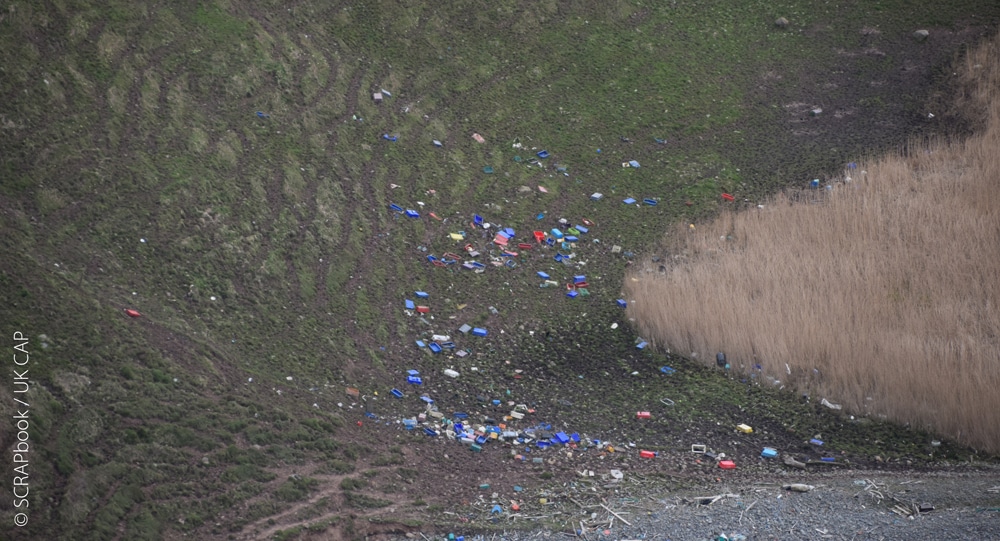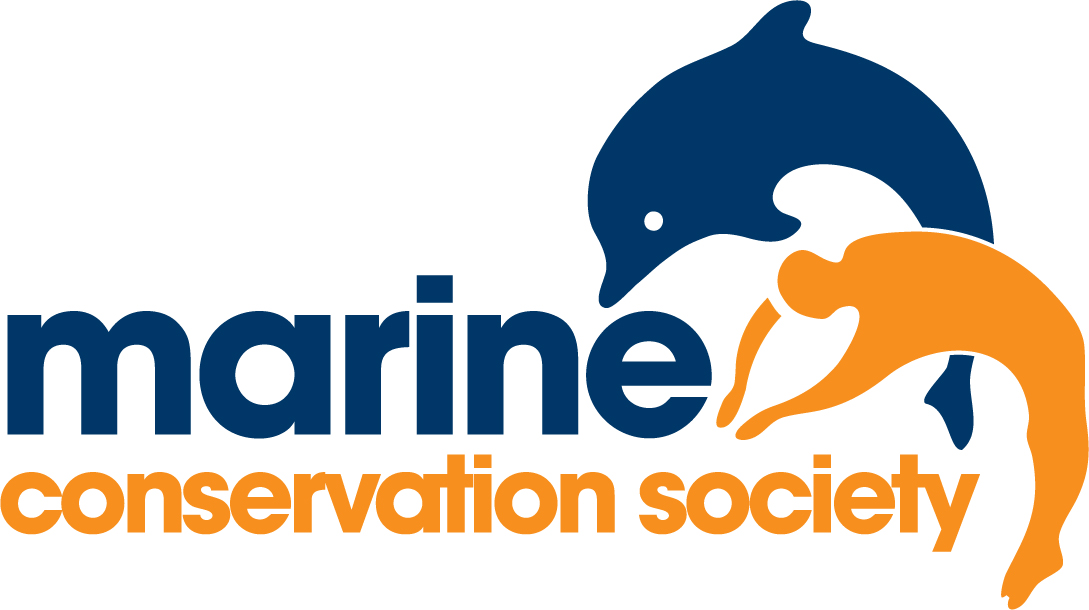Marine Life & Conservation
Aerial photographs identify pollution hotspots

 New map of Scotland’s hidden coastline will help in fight against beach litter.
New map of Scotland’s hidden coastline will help in fight against beach litter.
A project that’s been mapping the extent of litter around the Scottish coastline has launched a map that will allow volunteers and organisations to more accurately target their beach clean-ups and litter survey work, particularly along areas of coastline that rarely, or never, get litter-picked.
SCRAPbook – Scottish Coastal Rubbish Aerial Photography – is a collaboration between three charities, the Marine Conservation Society (MCS), Sky Watch Civil Air Patrol and the Moray Firth Partnership. It involves pilots and observers taking to the skies to photograph areas of the coastline where they spot litter or pollution.
Catherine Gemmell, MCS Scotland Conservation Officer, coordinates the mobilisation of thousands of volunteers around the Scottish coastline to clean up beaches and record the litter they find as part of the charity’s Beachwatch programme. But, says Catherine, up until now, many kilometres of Scotland’s coastline have never been cleaned: “With nearly 10,000 kilometres making up Scotland’s mainland coast we know there are many stretches of beach that have had no recorded clean up. SCRAPbook will help address that, and provide us with new information that will be crucial to highlight to government and industry what steps we need to be taken next in the fight against marine litter.”
Sky Watch pilots have flown over sections of Scotland’s mainland coast for the last few months taking photographs when they see litter on the coastline. These are then classified by volunteers to establish how much litter is visible on a scale of 1 -5 with 5 being the worst. These classified photographs have now been uploaded to the map where anyone can click on the different points to see an example photo and the type of collection needed.
Archie Liggat, Sky Watch Chairman, says the charity’s pilots get a bird’s eye view of the country’s coastline: “In the worst areas it is absolutely at industrial levels, with plastic blasted up the hills from the coast where it’s been blown. There are hundreds and hundreds of large plastic barrels and crates all over the place, and when there is any large plastic litter visible at all there’s usually a significant amount of smaller stuff too.”
The map can be used by anyone – from local communities and businesses that would like to tackle a bit of the coast the pilots have found litter on, to a kayak club that can help get to those hard to reach areas. Schools, groups, water sports clubs and councils are all being urged to use the website to find out where the worst affected areas are and where efforts need to be focused.
Vicky Junik, from the Moray Firth Partnership which began the SCRAPbook idea said: “We hope that SCRAPbook will become an invaluable tool to everyone tackling the rising tide of marine litter. The easier it is to find out where the litter is, the easier it is to mobilise clean up efforts, and we’ve tried to focus on the less popular or harder to reach parts of the coastline, so we can build a really comprehensive picture of the reality and scale of the challenge; a challenge everyone can help tackle.”
The Minister for Rural Affairs & the Natural Environment, Mairi Gougeon said: “Litter washed up on our coastline is a scourge that harms our natural environment, both in the sea and on land. That is why I welcome this exciting project that enables the extent of litter around our coastline to be proactively mapped. By collating this information we can better understand where further attention needs to be focused in our continuing efforts to clean up our beautiful coastline.”
The map is available at www.scrapbook.org.uk for anyone, from organised groups to schools, communities to individuals, to use. Just by visiting the website people will be able to see how much litter has been identified right across Scotland and how they might help in their own area.
Blogs
The Ocean Cleanup Breaks 10,000,000 KG Barrier

The Ocean Cleanup, the global non-profit project, has removed a verified all-time total of ten million kilograms (22 million lbs.) of trash from oceans and rivers around the world – approximately the same weight as the Eiffel Tower.
To complete its mission of ridding the oceans of plastic, The Ocean Cleanup uses a dual strategy: cleaning up the Great Pacific Garbage Patch (GPGP) to remove the plastic already afloat in the oceans, while stopping the flow of plastic from the world’s most polluting rivers.
Through cleaning operations in the GPGP and in rivers in eight countries, the cumulative total of trash removed has now surpassed ten million kilograms. This milestone demonstrates the acceleration of The Ocean Cleanup’s impact, while underlining the astonishing scale of the plastic pollution problem and the need for continued support and action.
While encouraging for the mission, this milestone is only a staging point: millions more tons of plastic still pollute our oceans and The Ocean Cleanup intends to continue learning, improving and innovating to solve this global catastrophe.
This announcement comes as governments from around the world meet to continue negotiations to develop a new legally binding instrument to end plastic pollution at INC4 in Ottawa, Canada. Representatives of The Ocean Cleanup will be in attendance and the organization will be urging decision-makers to collaborate towards a comprehensive and ambitious global treaty which addresses plastic at all stages of its life cycle and in all marine environments worldwide, including in areas beyond national jurisdiction.
It is encouraging to see that the need for remediation is reflected in the various options for potential treaty provisions. It is essential that the final treaty contains clear targets for the remediation of legacy plastic pollution, and reduction of riverine plastic emissions.
Tackling plastic pollution requires innovative and impactful solutions. The treaty should therefore incentivize the innovation ecosystem by fostering innovations that make maximal use of data, technology and scientific knowledge – such as those designed and deployed by The Ocean Cleanup.
‘After many tough years of trial and error, it’s amazing to see our work is starting to pay off – and I am proud of the team who has brought us to this point.’ said Boyan Slat, Founder and CEO of The Ocean Cleanup. ‘While we still have a long way to go, our recent successes fill us with renewed confidence that the oceans can be cleaned.’
The Ocean Cleanup was founded in 2013 and captured its first plastic in 2019, with the first confirmed catch in the GPGP coming soon after the deployment of Interceptor 001 in Jakarta, Indonesia. After surpassing one million kilograms of trash removed in early 2022, the non-profit project has since progressed to the third iteration of its GPGP cleaning solution, known as System 03, and a network of Interceptors currently covering rivers in eight countries, with more deployments set for 2024.
About The Ocean Cleanup
The Ocean Cleanup is an international non-profit organization that develops and scales technologies to rid the world’s oceans of plastic. They aim to achieve this goal through a dual strategy: stemming the inflow via rivers and cleaning up the legacy plastic that has already accumulated in the ocean. For the latter, The Ocean Cleanup develops large-scale systems to efficiently concentrate the plastic for periodic removal. This plastic is tracked and traced through DNV’s chain of custody model to certify claims of origin when recycling it into new products. To curb the tide via rivers, The Ocean Cleanup has developed Interceptor™ solutions to halt and extract riverine plastic before it reaches the ocean. Founded in 2013 by Boyan Slat, The Ocean Cleanup now employs a broadly multi-disciplined team of approximately 140. The foundation is headquartered in Rotterdam, the Netherlands.
For more information, visit: theoceancleanup.com and follow @theoceancleanup on social media.
Marine Life & Conservation
Steve Backshall to headline Shark Trust’s flagship event: For the Love of Sharks

Join a host of amazing, shark loving, speakers including Steve Backshall and the Shark Trust team for an evening celebrating shark conservation at the Royal Geographical Society in London this November.
Date: 29th November 2024
Time: 6-10pm
Location: Royal Geographical Society, London
Tickets: https://www.sharktrust.org/Event/flos24
The event will be a celebration of all things shark. Those lucky enough to get hold of tickets will hear from engaging guest speakers with a passion for sharks.
The line-up includes (*subject to change if unforeseen circumstances arise)
Steve Backshall: One of television’s busiest presenters, BAFTA award-winning wildlife expert Steve has been passionate about the wild world ever since he was young.
Steve’s impressive TV career has taken him all around the world, investigating a wide array of species and environments. Steve has filmed over 100 hours of children’s wildlife programmes with the BAFTA award winning Deadly 60 franchise and recently, with Sky Nature, for his new series ‘Whale with Steve Backshall’. He has been a patron for the Shark Trust for 10 years.
Simon Rogerson: is a photojournalist specialising in natural history, diving and the sea.
He is editor of SCUBA magazine, the official journal of the British Sub-Aqua Club. Simon started his career as a crime reporter but gravitated towards his ‘less depressing’ interest in underwater exploration, joining the staff of DIVE magazine in 1999. In 2005 he was named ‘Editor of the Year’ in the PPA’s Independent Publishing Awards. Simon also works as a freelance writer, contributing frequently to the Sunday Times and Telegraph, in addition to BBC Wildlife, Esquire, and a host of international diving magazines. He is the author of a book, Dive Red Sea, published by Ultimate Sports. Now based in Berkshire, Simon has been a Patron of the Shark Trust for 20 years.
More speakers to be announced soon. Head to the Shark Trust website to learn more.
The evening will also allow guests the final chance to see the Oceanic 31, shark art exhibition. Some of the artwork will be auctioned/raffled at the event, while the rest will be auctioned online to raise money for the Shark Trust Oceanic Programme.
For the Love of Sharks is an evening with something for everyone who is interested and fascinated by sharks. Join the Shark Trust, their Patrons, Trustees and Staff, along with a host of supporters for this celebration of shark conservation.
For more information or to buy a ticket: https://www.sharktrust.org/Event/flos24
-

 News3 months ago
News3 months agoCapturing Critters in Lembeh Underwater Photography Workshop 2024: Event Roundup
-

 Marine Life & Conservation Blogs3 months ago
Marine Life & Conservation Blogs3 months agoCreature Feature: Swell Sharks
-

 Blogs2 months ago
Blogs2 months agoMurex Resorts: Passport to Paradise!
-

 Blogs2 months ago
Blogs2 months agoDiver Discovering Whale Skeletons Beneath Ice Judged World’s Best Underwater Photograph
-

 Gear Reviews3 weeks ago
Gear Reviews3 weeks agoGEAR REVIEW – Revolutionising Diving Comfort: The Sharkskin T2 Chillproof Suit
-

 Gear Reviews3 months ago
Gear Reviews3 months agoGear Review: Oceanic+ Dive Housing for iPhone
-

 News2 months ago
News2 months agoPADI Teams Up with Wellness Brand Neuro to Drive Ocean Change and Create a Blue State of Mind
-

 Marine Life & Conservation2 months ago
Marine Life & Conservation2 months agoSave the Manatee Club launches brand new webcams at Silver Springs State Park, Florida







